Feast your eyes on the world's most outstanding architectural photographs, videos, visualizations, drawing and models with the winners of Architizer's inaugural Vision Awards. Sign up to receive future program updates >
At the heart of architecture and music is cultural life. Both are defined by structure, style and history, drawing from regional and contextual influences to shape human experience. But what happens when architecture and music intersect? The design of music pavilions calls for a very specific type of structure — one that is usually created as a temporary installation that can be easily assembled and disassembled. The idea is to touch the land lightly, draw materials locally, and create a space for observation and gathering. The resulting projects are a series of explorations that capture the imagination and ask us to reconsider what design looks like today.
Music pavilions are unique because they combine both a need for gathering large groups of people and providing them with views, while also paying close attention to acoustics. They are also widely different depending on the type of music or performance they are made for, as well as the additional programs that may be housed within it or adjacent to it. In turn, the scale of these pavilions varies depending on the size of the audience they are meant to accommodate, and sometimes, they exist purely as a stage for the musicians. When viewed in section and axonometric, the following music pavilions represent unique architectural studies that look at how people come together, listen and share an appreciation for performance.
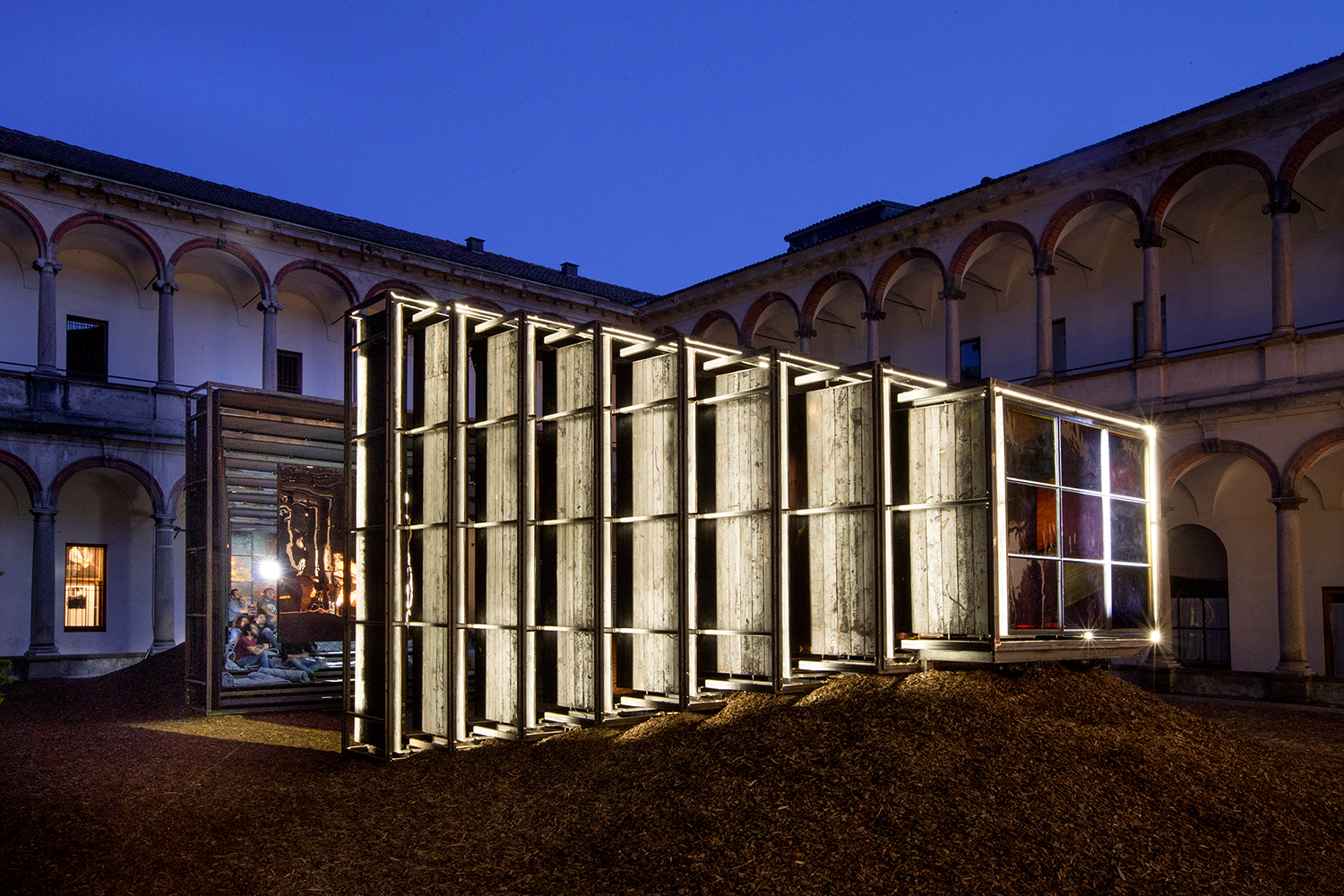

 Camera Chiara by Annabel Karim Kassar Architects, Milan, Italy
Camera Chiara by Annabel Karim Kassar Architects, Milan, Italy
Annabel Karim Kassar Architects shows an architectural installation Camera Chiara with two pavilions: Liwan and Camera Obscura. The two telescopic structures were conceived to be reused and reassembled in a different location after its launch in Milan: the Liwan as a mobile shelter and the Camera Obscura as an itinerant cinema. Evoking the bellows of old cameras, built of raw metal and dark, burnt wooden planks, Kassar symbolizes stills of Lebanese lifestyle by not only highlighting the savoir-faire but also the French and Lebanese savoir-vivre.

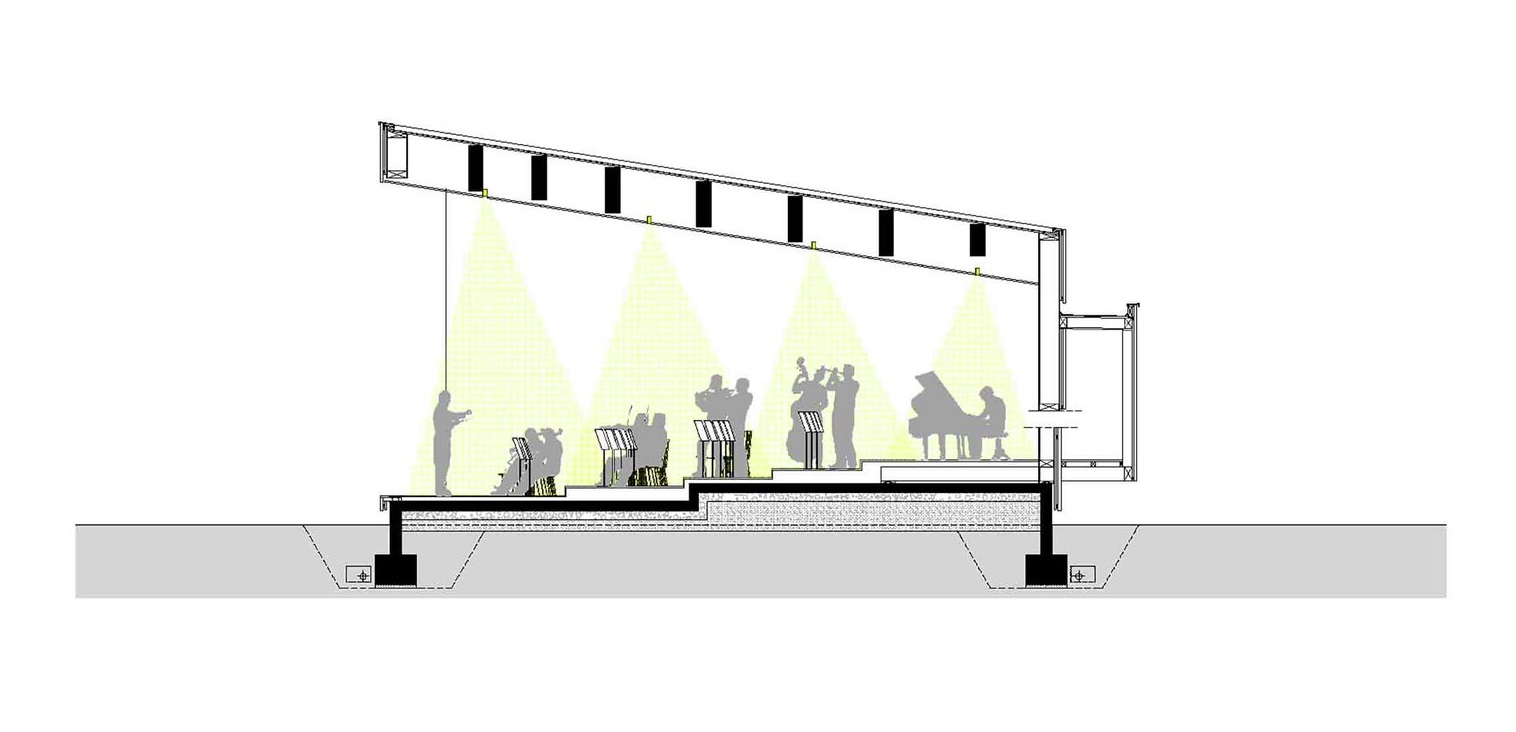
 Music Pavillion Bad Ischl by Two in a Box Architekten, Bad Ischl, Austria
Music Pavillion Bad Ischl by Two in a Box Architekten, Bad Ischl, Austria
This Music Pavilion was erected in the summer of 2014 on the premises of the Spa Gardens (Kurpark). It was designed to show the compatibility between individuality, design and ecology. This is demonstrated by the use of domestic renewable wood. The basic elliptical shape of the pavilion results from the urban planning situation of the Spa Gardens and blends in harmoniously with the surroundings. The artist’s entrance consists of a second ellipse connected tangentially to the main ellipse. In order to achieve the most favorable sound propagation conditions, a roof shape that inclines to the rear was selected for the main roof which further underscores the dynamic shape of the construction.
The organic shape required a very puristic approach with regard to materials and construction. Taking into account the surrounding environment, the Music Pavilion was finally designed as a wooden construction made from silver fir placed on a virtually invisible concrete base. The base practically disappears in the shadow of the wooden construction and thereby allows the pavilion to float above the gravel enhancing the airy appearance of the design.
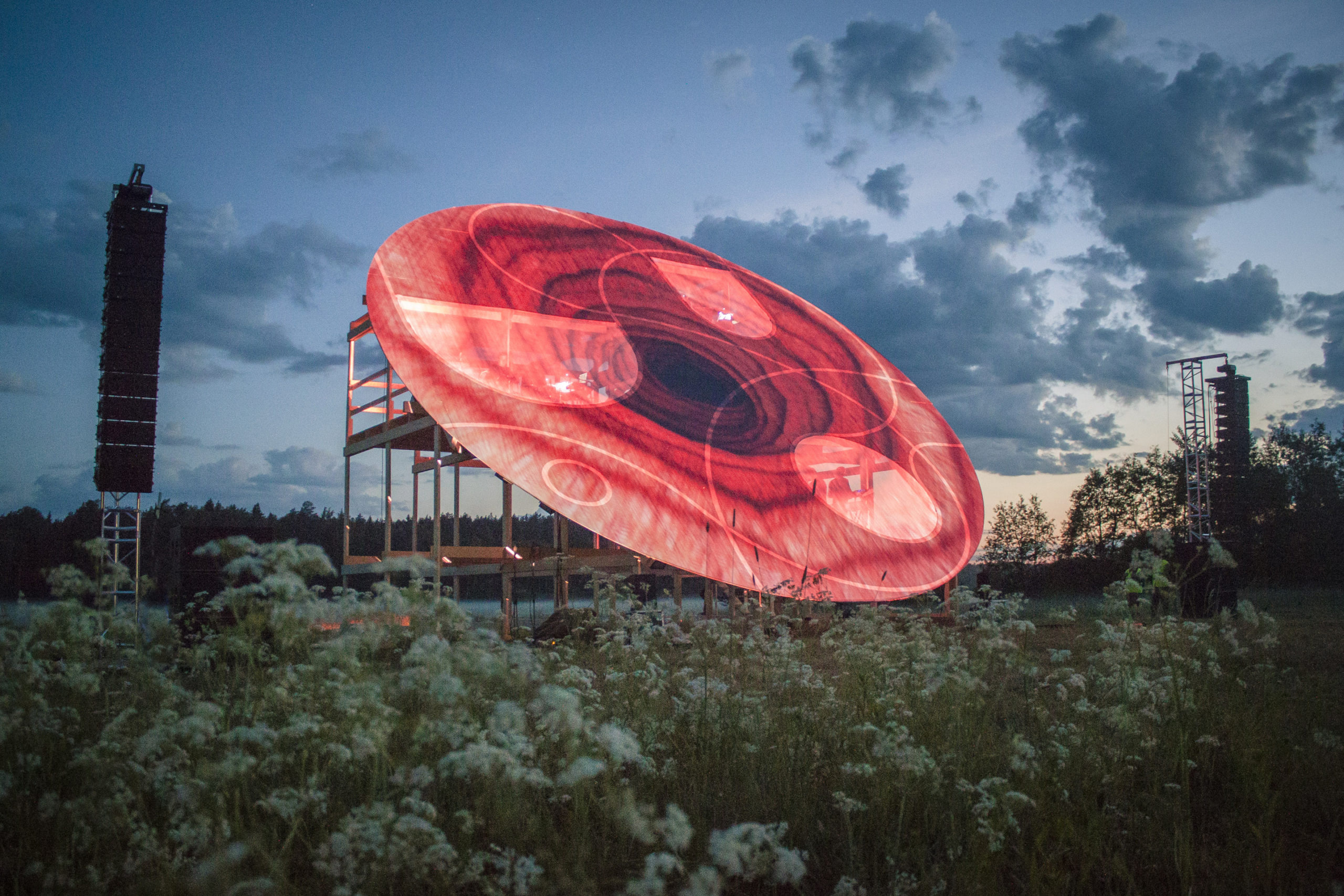

 Pavilion of Nature Concert Hall 2017 by DJA, Dviete, Latvia
Pavilion of Nature Concert Hall 2017 by DJA, Dviete, Latvia
Nature Concert Hall is multimedia nature-educational event that incorporates science, dramaturgy, music and art. Its aim is to bring attention to surrounding nature, to tell about daily unnoticed and invite to be careful; it was designed as an art object that unifies architecture, music, science, video and light installation. A circular platform is placed in 45 degree angle and works as a giant video projection screen, as a portal to the underground world. Musicians are placed in four floors behind the entrance; they are visible to audience through three opening in the circular platform. The load bearing structure is designed both vertically and horizontally as structural grid that is easily and quickly assembled and dismantled for re-use in different locations.


 LOUD SHADOWS by Plastique Fantastique, Terschelling, FR, Netherlands
LOUD SHADOWS by Plastique Fantastique, Terschelling, FR, Netherlands
LOUD SHADOWS is a joint project of Kate Moore, The Stolz, LeineRoebana and Plastique Fantastique. The project was designed as a collage made by artists coming from different backgrounds: dance, music, architecture. The architecture of Plastique Fantastique is monumental, yet mobile, soft and transparent. Its ephemeral skin influences the environment as much as its inner space offers a lucid view outwards. It is the preferred place to merge dance (LeineRoebana) and music (Kate Moore, The Stolz), and challenge the perception of time. The pavilion was completed in the Netherlands in 2017 and also challenges the conceptual idea of music pavilions.
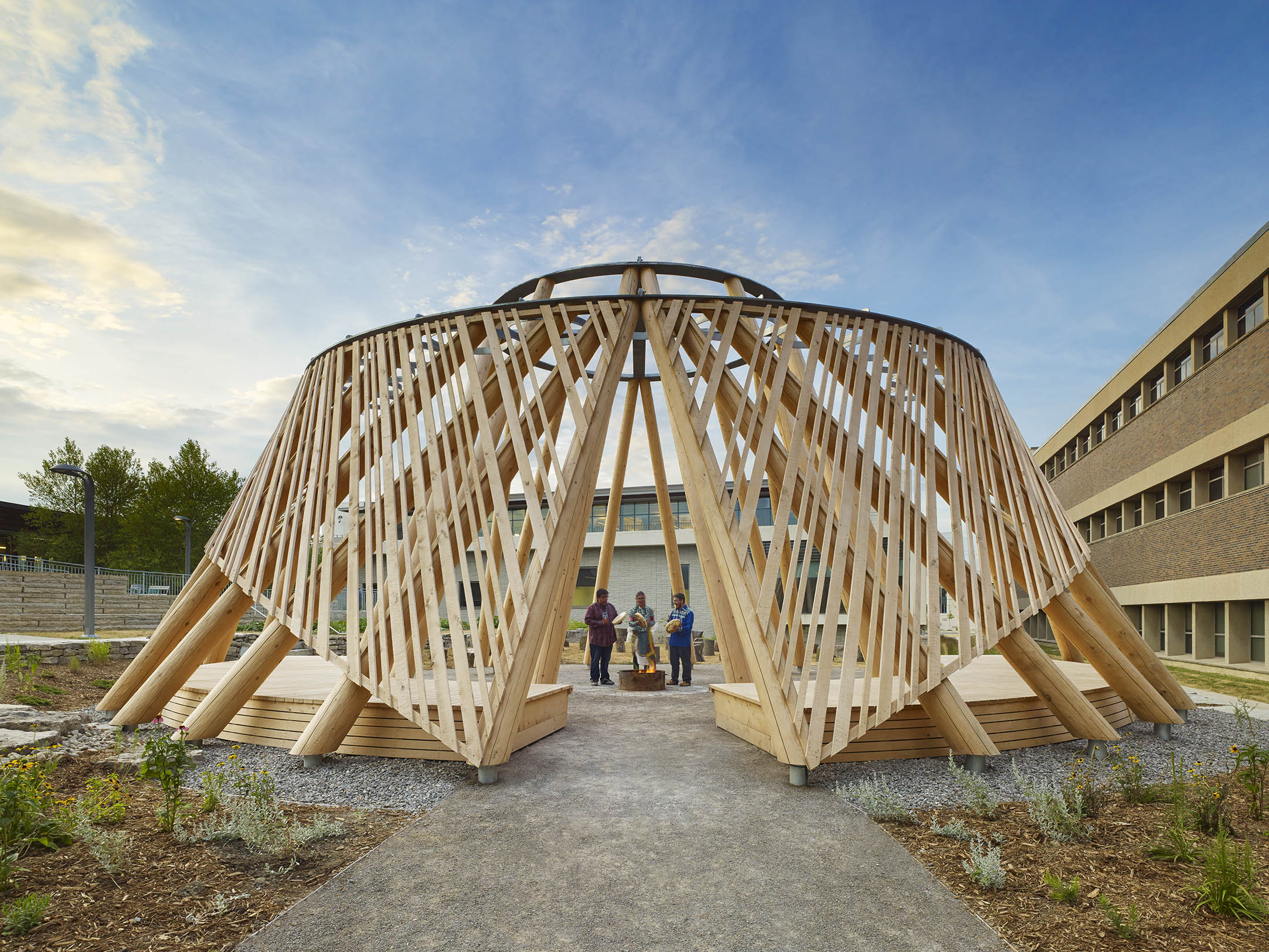

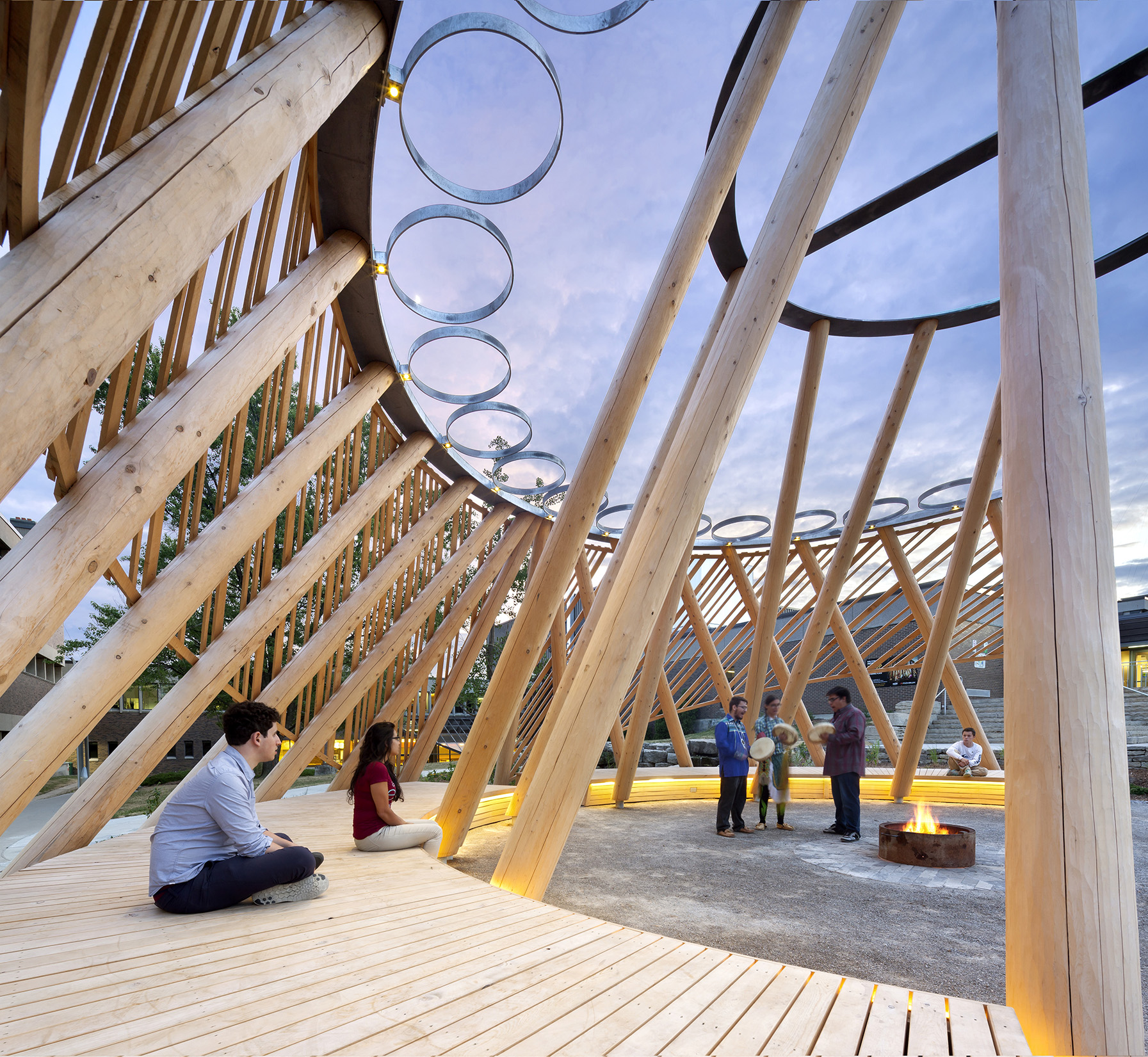 HOOP Dance Indigenous Gathering Place by Brook McIlroy Inc., Hamilton, Canada
HOOP Dance Indigenous Gathering Place by Brook McIlroy Inc., Hamilton, Canada
The HOOP Dance honors Aboriginal culture, traditions and world views. It welcomes people of all backgrounds, beliefs and ages into an inclusive circle — a place for teaching, music, story-telling, ceremony, relaxation and contemplation. Mohawk College’s new outdoor pavilion is the result of a collaborative design process between Brook McIlroy Architects; Mohawk College; Aboriginal students of the College; and Elders and members of the Six Nations First Nation and Mississaugas of the New Credit First Nation Communities.
Its form is comprised of two radiating and intersecting circles joined by a raised seating platform, referencing traditional wood fabrication methods and the spatial organization of the Longhouse. Collectively the HOOP Dance is comprised of four elements: an open air pavilion, a fire circle, a water garden and traditional garden.

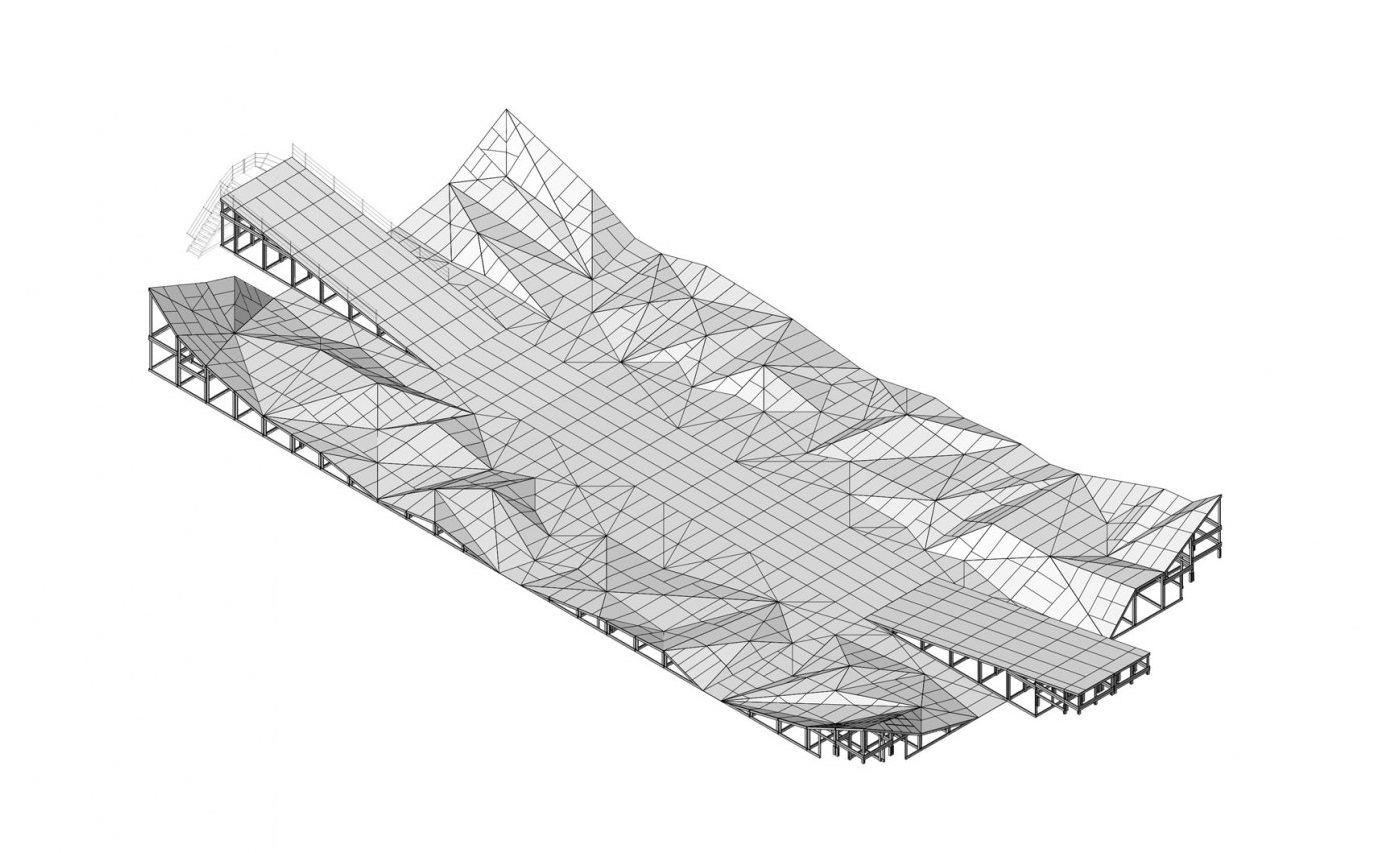
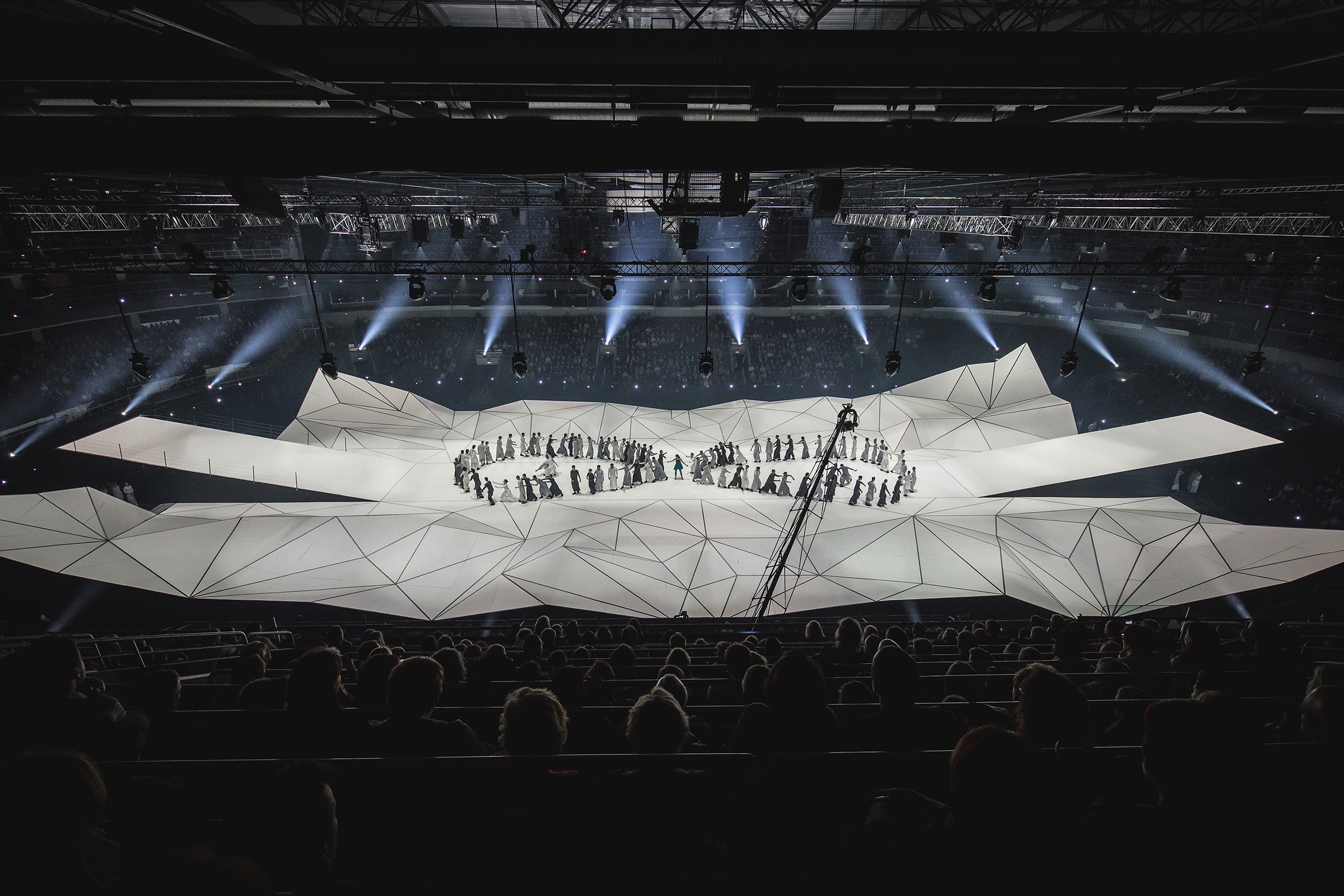 Both Sides – Abas Malas by DJA, Rīga, Latvia
Both Sides – Abas Malas by DJA, Rīga, Latvia
As the culmination event of the Latvia’s centenary, Both Sides was designed as a multimedia dance performance. Through the music, choreography, scenography, video and light projections, the story of the emergence of Latvia and experience of the last hundred years is told. The 2000 m2 large stage was designed in the shape of Latvian flag. The flag is used not only as a symbol of the nation, but also as a space making element. It creates dance floor for large scenes of groups of dancers and smaller spaces for soloists. The polygonal surface of the scenography also worked as a giant video projection screen for Latvian history photo and video interpretations.
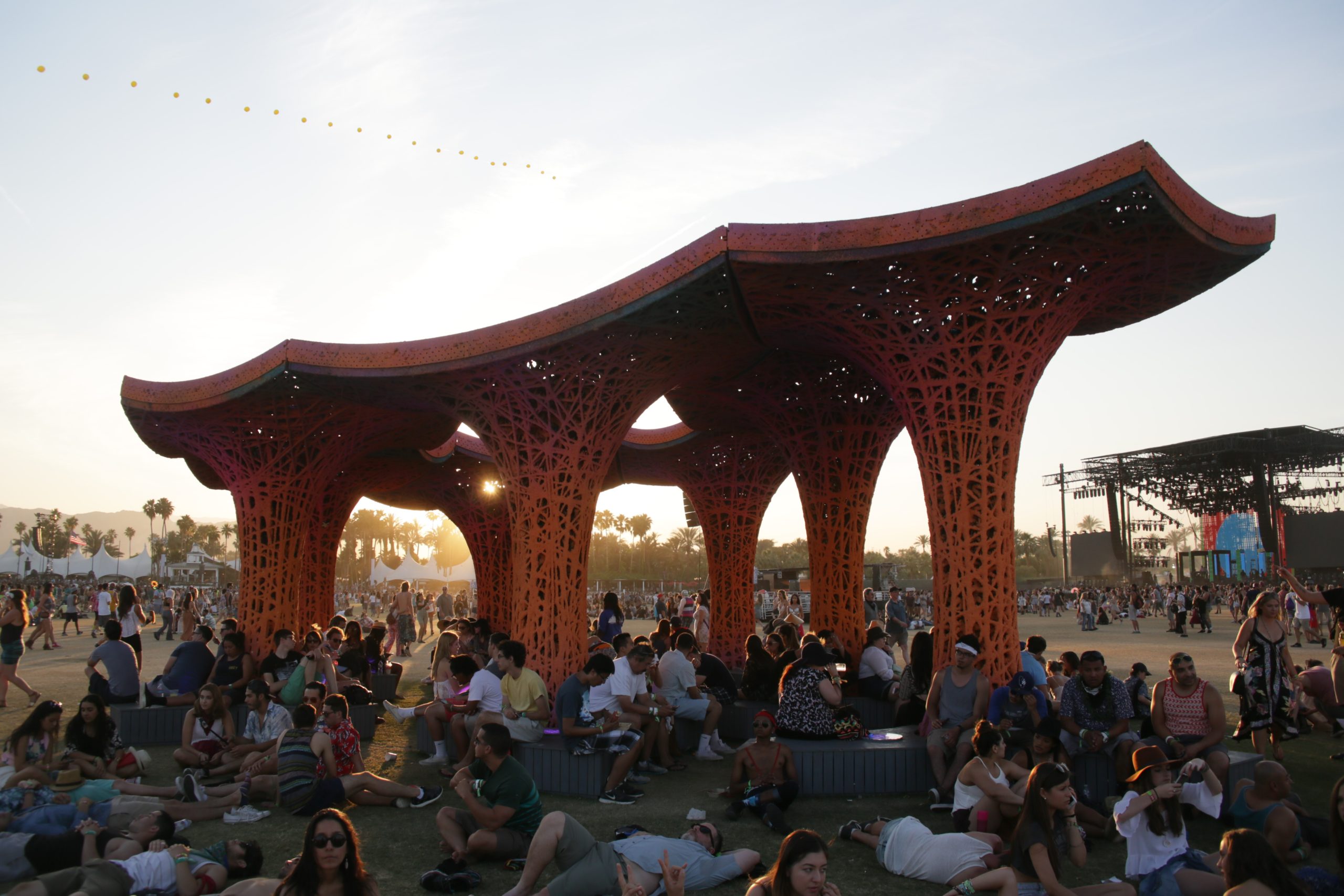

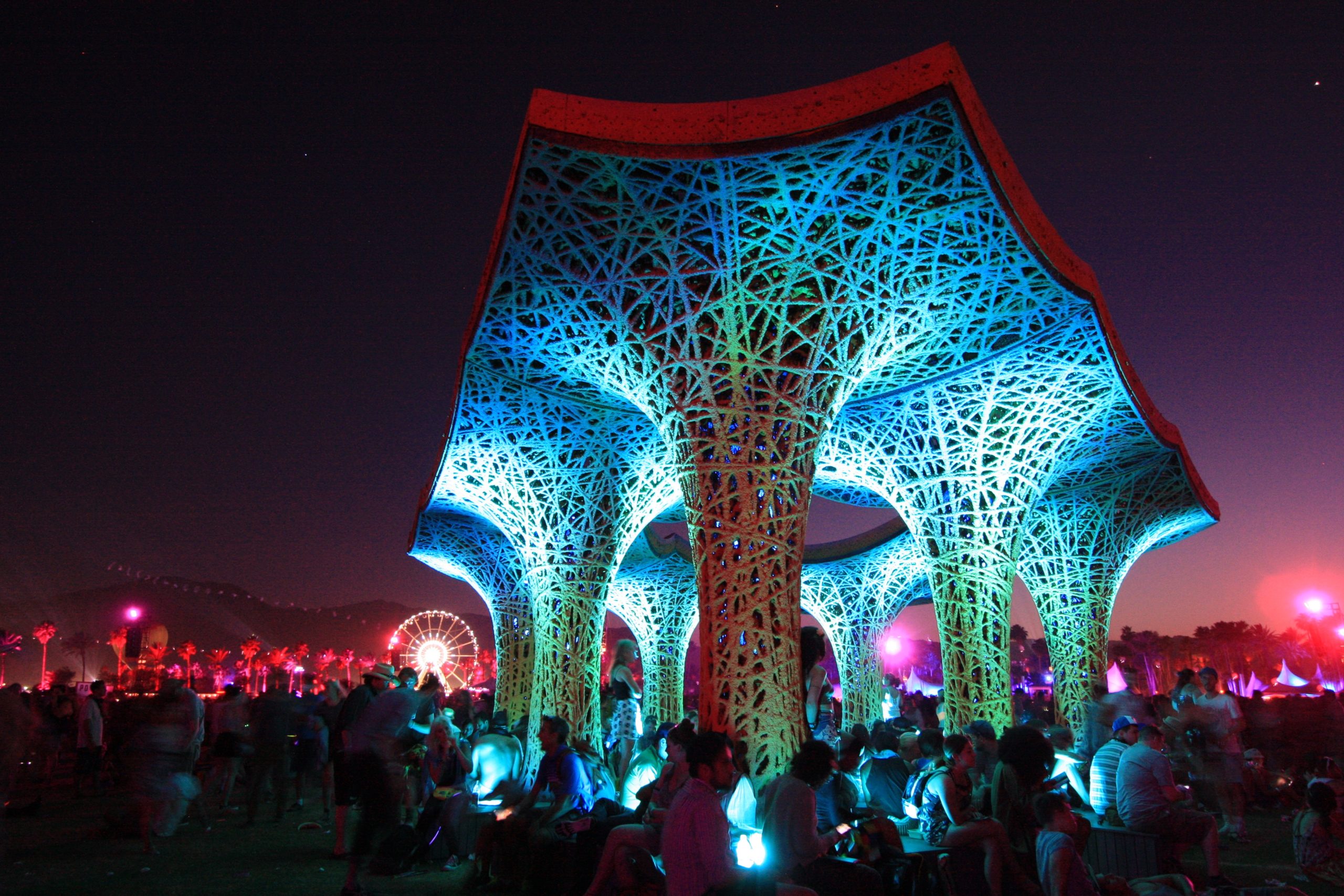 Pulp Pavilion by Ball-Nogues Studio, Coachella, CA, United States
Pulp Pavilion by Ball-Nogues Studio, Coachella, CA, United States
Pulp Pavilion was designed as a study in material composites using reclaimed paper. The result was a gathering space that was a respite from the sun and frenetic energy of the Coachella Valley Music and Arts Festival in the California desert. It was an ideal place to view performances on two stages.
The paper used in the Pavilion was diverted from the waste stream and is cheaply available almost anywhere in the world. Unlike fiberglass or carbon fiber composites that are polymer based, the Pavilion contained no toxic materials; it could be recycled or composted after the two-week run of the festival. The Pavilion was an ideal shelter for the dry air, heat, and intense sunlight of the desert but these climatic factors also provided the ideal conditions for producing the structure enabling the pulp to dry very quickly and saving a significant amount of time compared to cooler, more humid climates.
Feast your eyes on the world's most outstanding architectural photographs, videos, visualizations, drawing and models with the winners of Architizer's inaugural Vision Awards. Sign up to receive future program updates >
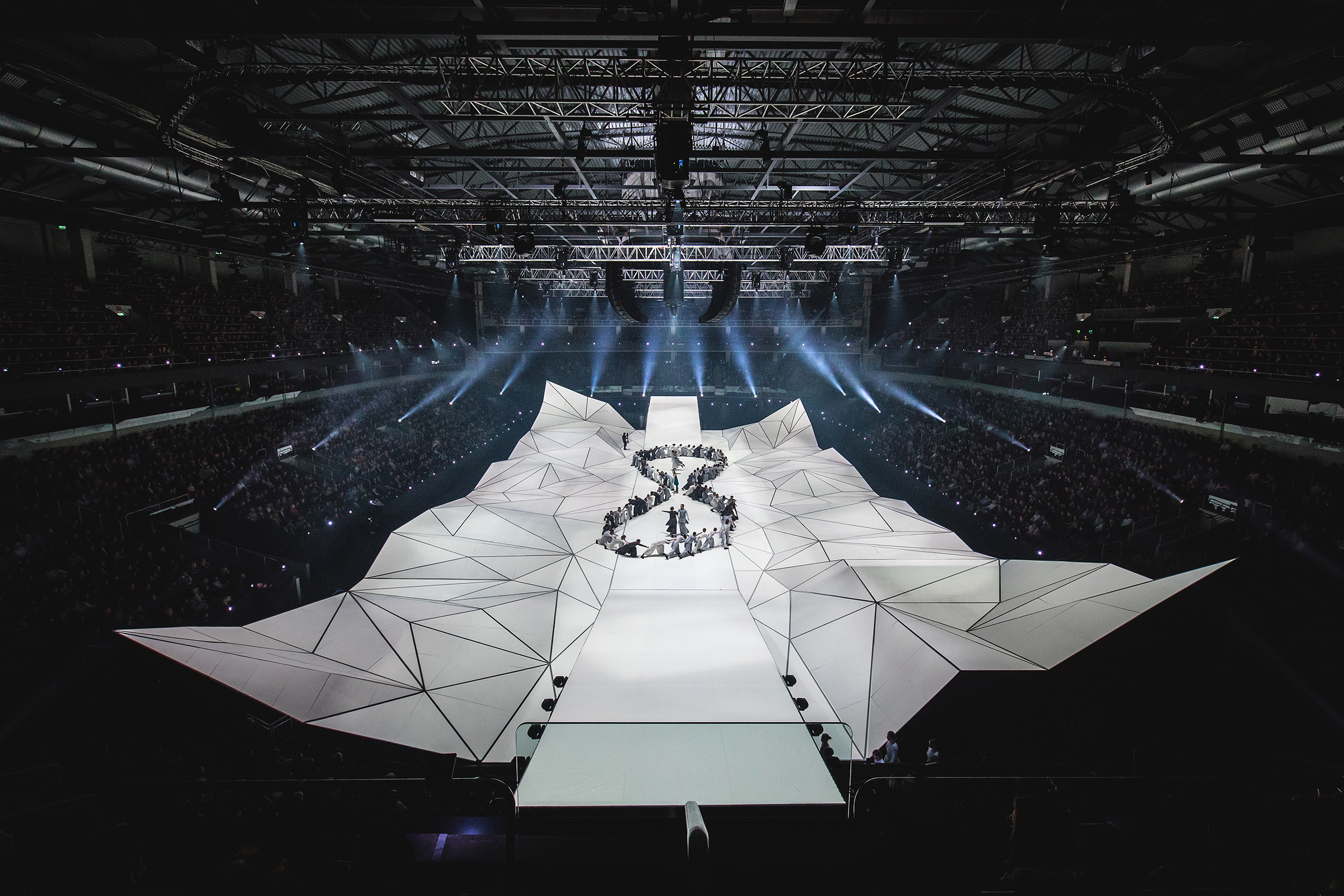





 HOOP Dance Indigenous Gathering Place
HOOP Dance Indigenous Gathering Place 


